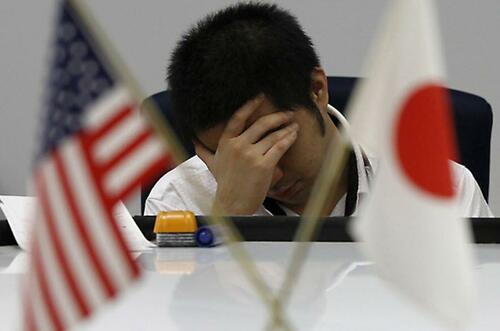
Authored by Michael Lebowitz via RealInvestmentAdvice.com,
We recently wrote Japan’s Lost Decades to appreciate better why Japan’s GDP is smaller than it was in 1995 and why it took 35 years for its stock market to set its recent record high.

Many pundits claim the U.S. is following Japan’s path. The path includes a stagnant economy, massive government debt, and a central bank that must dominate financial markets to keep the economy and financial markets afloat.
There is merit to that opinion. The U.S. government has excessive debt and is increasingly negligent in managing its budget. Also, the nation’s economic growth rate has been trending lower for thirty years, and fiscal dominance is becoming the norm, not the exception.
While we may be on a similar path as Japan, we are not nearly as far along. There are many differences between Japan and the United States worth considering.
All Asset Bubbles Are Not Alike
At the heart of Japan’s current problems were its massive real estate and stock bubbles that popped in 1989.
To appreciate the enormity of their bubbles, consider the following from Ben Carlson’s article The Biggest Asset Bubble In History.
The aftershock could have been dealt with in many ways, but at its core, it came down to whether to pay a dear price over a short period or draw out the costs over decades. They elected the latter, saving their banks and relying on massive government spending to insulate the economy.
Over the last 25 years, the U.S. dot com and subprime bubbles have popped. While economically costly, the bubbles were minor compared to Japan’s. Accordingly, when they popped, the economic and financial consequences paled compared to Japan’s.
Banking Sector
The real estate and stock bubbles were supported with massive leverage via bank loans. When the asset values plummeted, the debt supporting them was often worthless. The banking system would have collapsed if the banks had written off the ba (more…)


 Bitcoin
Bitcoin  Ethereum
Ethereum  Tether
Tether  TRON
TRON  Stellar
Stellar  Litecoin
Litecoin  Monero
Monero  Ethereum Classic
Ethereum Classic  VeChain
VeChain  Maker
Maker  Zcash
Zcash  Tezos
Tezos  NEO
NEO  Dash
Dash  Decred
Decred  0x Protocol
0x Protocol  Ontology
Ontology  NEM
NEM  Lisk
Lisk  OMG Network
OMG Network  Bitcoin Gold
Bitcoin Gold